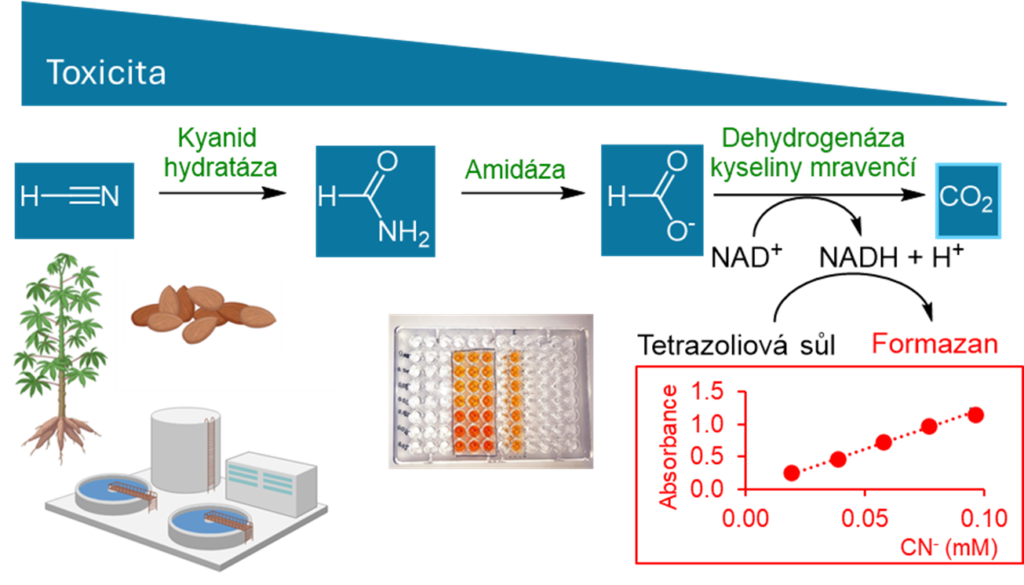Biocatalysis
The Biotransformation Laboratory uses microorganisms as sources of enzymes for biotransformation reactions of natural substances. The group maintains an extensive library of enzymes ( glycosidases, glycosyltransferases, arylsulfotransferases, nitrilases, etc., about 200 items) and a collection of production microorganisms that are essential for our work. Precision analyses by LC-MS and advanced HPLC and GC methods are an important part of the collection. The main methodological pillars guaranteed by senior experts support all research in the group: molecular biology and protein engineering, preparative HPLC, HPLC and LC-MS, GC, organic chemistry, microbiology, nanomaterials science. The group’s solid infrastructure, consisting of, among others, modern instrumentation – HPLC and LC-MS, GLC, protein chromatography, spectrophotometry, PCR thermocyclers, culture equipment, laminar boxes, molecular biology equipment, microscopes, etc. – allows for high-quality research using the latest methods.

Glycobiology
The “White Team” is involved in the synthesis of bioactive oligosaccharides and glycomimetics by enzymatic, chemical or chemoenzymatic methods. It makes appropriate use of a broad spectrum of knowledge from in silico molecular modelling of proteins, molecular biology, protein expression and purification, enzymology, nanomaterial science, glycobiology and especially carbohydrate chemistry and biochemistry. The activities of the prepared compounds, such as their affinity for lectins or inhibition of glycosides, are tested in-house with recombinantly produced proteins by various methods including surface plasmon resonance, ELISA-type assays or specific assays in cell culture. For tests on higher biological systems such as cellular organoids and animal models, we have established a network of domestic and international collaborations, supported by joint projects.

Flavonoids and metabolomics
The “Yellow Team” deals with (poly)phenols, flavonoids and flavonolignans and some other natural substances – their chemistry, chemical and enzymatic modification, separation, characterization and biological activity. In recent years, the main focus has been on 2,3-dehydroflavonolignans, hydrocarpins and various semi-synthetic flavonoid derivatives, where their modulatory effect on multidrug resistance in bacteria and cancer cells is being investigated. The metabolic fate of polyphenols in the human body, including their interactions with the human gut microbiota, is investigated using our in-house prepared standards of (potential) metabolites (sulfates and glucuronides). The expertise of other teams in the laboratory is also intertwined in the scope of this team, so that we are also studying enzymatic glycosylation and deglycosylation of natural compounds such as mycotoxins.
Biotransformation of cyanide, nitriles and aldoximes
The “Blue Team” focuses on the enzymes of microbial cyanide and nitrile metabolism. In recent years, the focus has been, for example, on the environmentally friendly preparation of nitriles, which are used in pharmaceutical synthesis, as solvents or as flavouring agents in cosmetics and cleaning products. The novel preparation of nitriles from carboxylic acids using the enzymes carboxylate reductase and aldoximdehydratase makes it possible to eliminate the use of toxic cyanide and, in addition, to use sustainable resources – biomass. Another line of research is the use of enzymes transforming free cyanide (hydrogen cyanide + cyanide ions) into less toxic or non-toxic substances. This process may be useful not only for the detoxification of industrial wastes, but also for new ways of spectrophotometric detection of free cyanide, e.g. in cyanogenic plants (cassava, almonds, etc.) and in foods prepared from them.
